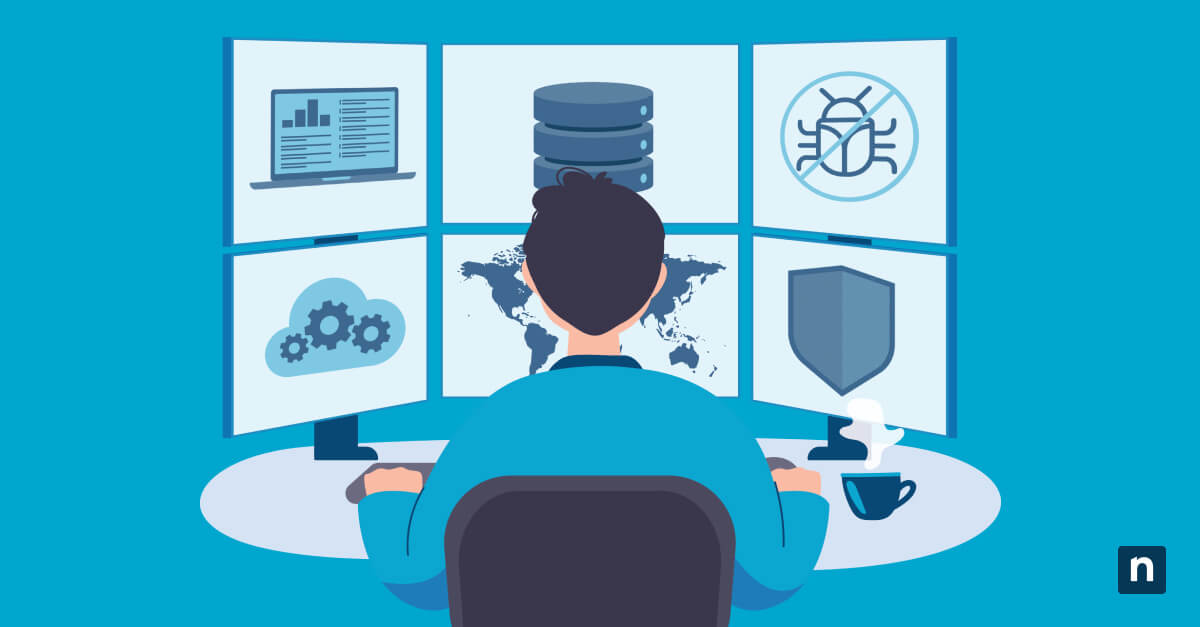The automatic driver installer for Windows 10 helps ensure that computer components are always up-to-date and work as intended, but controlling the frequency of automatic updates also preserves functionality in scenarios when drivers need to be tailored to your needs.
This article explores different ways to configure automatic driver installations for new devices on Windows 10 and the best troubleshooting solutions.
How to toggle the automatic driver installer for Windows 10 on or off
Toggling scheduled driver updates on/off allows IT professionals to manage and deploy specific driver packages, bolstering system stability.
Method 1: Using Group Policy Editor (Windows 10 Pro, Enterprise, Education)
⚠️This method requires administrative privileges.
- Press Win + R, type gpedit.msc, and hit Enter.
- Using the left-hand pane, navigate to Computer Configuration > Administrative Templates > Windows Components > Windows Update.
- In the right-hand pane, double-click Do not include drivers with Windows Updates.
- Select Enabled to toggle automatic driver updates off or Disabled to turn automatic driver updates on.
- Click Apply, then OK.
- Restart the workstation to apply changes.
Method 2: Using Registry Editor (works on all editions)
⚠️This method involves changing Registry values and requires administrative rights. Before you proceed, create a backup.
- Press Win + R, type regedit, and hit Enter.
- Using the Registry Editor’s address bar, navigate to the following key:
HKEY_LOCAL_MACHINE\SOFTWARE\Microsoft\Windows\CurrentVersion\Device Metadata
- In the right-hand pane, double-click PreventDeviceMetadataFromNetwork.
- In the Value field:
- Type 0 to allow automatic driver updates.
- Type 1 to block automatic driver updates.
- Press OK.
- Restart the workstation to apply changes.
Method 3: Using Control Panel
If modifying low-level settings isn’t necessary, using the Control Panel is the simplest way to configure automatic driver update settings.
- Press Win + R, type control, and hit Enter.
- Navigate to System > Advanced System Settings to open the System Properties pop-up.
- Click the Hardware tab and open the Device Installation Settings.
- When asked if you want to automatically download manufacturer apps for your devices, choose depending on your needs.
- Click Save Changes, then OK.
- Restart your PC to apply changes.
Frequently Asked Questions (FAQ)
Q: What happens if I disable automatic driver installation?
A: When you disable automatic driver updates, you’ll no longer receive automatic drivers for new hardware (e.g., Mouse, Monitor, etc.) that gets added to your system. However, this allows IT staff to use manufacturer-specific/older drivers that could be a better fit performance-wise.
🛑| Revert driver updates to restore functionality and fix system instability.
Read NinjaOne’s guide on how to roll back device drivers on Windows 10.
Q: Can I selectively allow driver updates?
A: Yes, you can choose which drivers get installed by disabling automatic updates via Group Policy/Registry Editor and manually downloading them from the vendor’s official website. If you use Windows 10 build 18980 or newer, you may go to Settings > Update & Security > Windows Update > View optional updates.
Q: Does this impact existing drivers?
A: No, toggling your automatic driver installer for Windows 10 doesn’t affect the drivers you already have installed. Disabling it simply prevents Windows Update from automatically applying new, possibly incompatible software updates to the workstation’s drivers.
Q: How do we stop Device Manager from automatically installing drivers?
A: Do the following:
- Press Win + R, type sysdm.cpl, and hit Enter.
- Go to the Hardware tab and click on Device Installation Settings.
- When prompted, select No (your device might not work as expected).
- Click Save Changes.
- Restart your PC to apply changes.
Troubleshooting common issues for the automatic driver installer (Windows 10)
Configuring update settings can lead to unforeseen errors, especially when you encounter conflicts in your organization’s policy.
Issue: My Group Policy settings are not applying
If your settings aren’t being implemented, check if other domain-level policies are conflicting with the changes you’ve made. Otherwise, push a force update by doing the following:
- Press Win and type cmd.
- Right-click Command Prompt and select Run as administrator.
- Run the following command to force the workstation’s policy to update:
gpupdate /force
Issue: Registry key is missing
If you can’t locate an important Registry key, you may create one and set a protocol for your system that allows/prevents an automatic driver update from being pushed.
Here’s how to do it in an alternative method to enable/disable the automatic driver installer for Windows 10:
- Press Win + R, type regedit, and hit Enter.
- Select Yes when prompted by User Account Control (UAC).
- Using the Registry Editor’s address bar, navigate to the following key:
“HKEY_LOCAL_MACHINE\SOFTWARE\Microsoft\Windows\CurrentVersion\DriverSearching”
- In the right-hand pane, double-click SearchOrderConfig.
- If the key isn’t there, do the following:
- Right-click on DriverSearching.
- Select New > DWORD (32-bit) Value.
- Name it SearchOrderConfig.
- If the key isn’t there, do the following:
- Double-click SearchOrderConfig to modify its value.
- Type 0 to turn automatic driver updates off.
- Type 1 to turn automatic driver updates on.
- Restart the workstation to apply changes.
Issue: Device not functioning after turning off updates
If your new and existing devices aren’t working properly, try the following fixes:
- Manually install drivers: Head to the manufacturer’s official website (e.g., NVIDIA, Logitech, etc.) and grab the driver update you need.
- Update drivers via Device Manager: Open Device Manager, right-click on the device and select Update driver > Browse my computer for drivers.
- Temporarily re-enable automatic updates: You’ll be able to disable them again once the proper drivers are installed.
Quick-Start Guide
NinjaOne has a relevant information for device driver management:
1. NinjaOne has a script called “Unsigned Driver Alert” that can help you get a list of unsigned drivers on a system.
2. While there isn’t a direct one-click solution for turning automatic device driver installation on or off in Windows 10,
NinjaOne provides several tools to manage drivers:
– You can view device-specific events and actions
– Manage device details and configurations
– Use scripts to handle driver-related tasks
Manually control your device driver updates
While automatic driver updates eliminate the hassle of upkeep, disabling this service empowers your IT department to customize PC components according to your organization’s needs, refining your process even further.
This strict control is a useful tool that can help consistently reduce the chances of downtime and protect productivity levels throughout the day.








